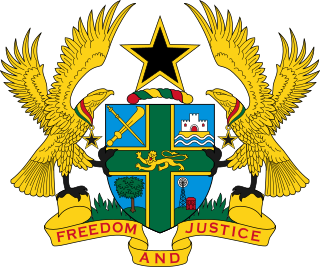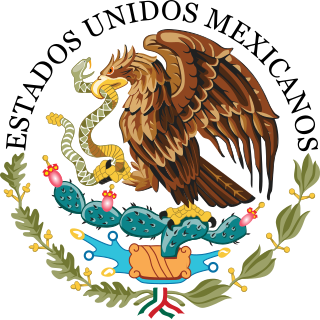Related Research Articles
Separation of powers is the division of a state's government into branches, each with separate, independent powers and responsibilities, so that the powers of one branch are not in conflict with others. The typical division into three branches of government, sometimes called the trias politica model, includes a legislature, an executive, and a judiciary. It can be contrasted with the fusion of powers in monarchies, but also parliamentary and semi-presidential systems where there can be overlap in membership and functions between different branches, especially the executive and legislative.

Article One of the Constitution of the United States establishes the legislative branch of the federal government, the United States Congress. Under Article One, Congress is a bicameral legislature consisting of the House of Representatives and the Senate. Article One grants Congress various enumerated powers and the ability to pass laws "necessary and proper" to carry out those powers. Article One also establishes the procedures for passing a bill and places various limits on the powers of Congress and the states from abusing their powers.

Article Two of the United States Constitution establishes the executive branch of the federal government, which carries out and enforces federal laws. Article Two vests the power of the executive branch in the office of the president of the United States, lays out the procedures for electing and removing the president, and establishes the president's powers and responsibilities.

Article Three of the United States Constitution establishes the judicial branch of the U.S. federal government. Under Article Three, the judicial branch consists of the Supreme Court of the United States, as well as lower courts created by Congress. Article Three empowers the courts to handle cases or controversies arising under federal law, as well as other enumerated areas. Article Three also defines treason.
United States v. Klein, 80 U.S. 128 (1871), was a landmark United States Supreme Court case stemming from the American Civil War (1861–1865).

The federal government of the United States is the national government of the United States, a federal republic located primarily in North America, composed of 50 states, five major self-governing territories, several island possessions, and the federal district and national capital of Washington, D.C., where most of the federal government is based.

Separation of powers is a political doctrine originating in the writings of Charles de Secondat, Baron de Montesquieu in The Spirit of the Laws, in which he argued for a constitutional government with three separate branches, each of which would have defined abilities to check the powers of the others. This philosophy heavily influenced the drafting of the United States Constitution, according to which the Legislative, Executive, and Judicial branches of the United States government are kept distinct in order to prevent abuse of power. The American form of separation of powers is associated with a system of checks and balances.
The powers of the president of the United States include those explicitly granted by Article II of the United States Constitution as well as those granted by Acts of Congress, implied powers, and also a great deal of soft power that is attached to the presidency.
Federal tribunals in the United States are those tribunals established by the federal government of the United States for the purpose of resolving disputes involving or arising under federal laws, including questions about the constitutionality of such laws. Such tribunals include both Article III tribunals as well as adjudicative entities which are classified as Article I or Article IV tribunals. Some of the latter entities are also formally denominated as courts, but they do not enjoy certain protections afforded to Article III courts. These tribunals are described in reference to the article of the United States Constitution from which the tribunal's authority stems. The use of the term "tribunal" in this context as a blanket term to encompass both courts and other adjudicative entities comes from section 8 of Article I of the Constitution, which expressly grants Congress the power to constitute tribunals inferior to the Supreme Court of the United States.
Advice and consent is an English phrase frequently used in enacting formulae of bills and in other legal or constitutional contexts. It describes either of two situations: where a weak executive branch of a government enacts something previously approved of by the legislative branch or where the legislative branch concurs and approves something previously enacted by a strong executive branch.
The unitary executive theory is a legal theory in United States constitutional law which holds that the President of the United States possesses the power to control the entire federal executive branch. The doctrine is rooted in Article Two of the United States Constitution, which vests "the executive Power" of the United States in the President.
The Appointments Clause of the United States Constitution empowers the President of the United States to nominate and, with the advice and consent (confirmation) of the United States Senate, appoint public officials. Although the Senate must confirm certain principal officers, Congress may by law invest the appointment of "inferior" officers to the President alone, or to courts of law or heads of departments.

The Constitution of Ghana is the supreme law of the Republic of Ghana. It was approved on 28 April 1992 through a national referendum after 92% support. It defines the fundamental political principles, establishing the structure, procedures, powers and duties of the government, structure of the judiciary and legislature, and spells out the fundamental rights and duties of citizens. It is made up of 26 chapters, not including the preamble.

The Federal Government of Mexico is the national government of the United Mexican States, the central government established by its constitution to share sovereignty over the republic with the governments of the 31 individual Mexican states, and to represent such governments before international bodies such as the United Nations. The Mexican federal government has three branches: executive, legislative, and judicial and functions per the Constitution of the United Mexican States, as enacted in 1917, and as amended. The executive power is exercised by the executive branch, which is headed by the president and his Cabinet, which, together, are independent of the legislature. Legislative power is vested upon the Congress of the Union, a bicameral legislature comprising the Senate and the Chamber of Deputies. Judicial power is exercised by the judiciary, consisting of the Supreme Court of Justice of the Nation, the Council of the Federal Judiciary, and the collegiate, unitary, and district courts.

Powers of the United States Congress are implemented by the United States Constitution, defined by rulings of the Supreme Court, and by its own efforts and by other factors such as history and custom. It is the chief legislative body of the United States. Some powers are explicitly defined by the Constitution and are called enumerated powers; others have been assumed to exist and are called implied powers.
The constitutional law of the United States is the body of law governing the interpretation and implementation of the United States Constitution. The subject concerns the scope of power of the United States federal government compared to the individual states and the fundamental rights of individuals. The ultimate authority upon the interpretation of the Constitution and the constitutionality of statutes, state and federal, lies with the Supreme Court of the United States.
An officer of the United States is a functionary of the executive or judicial branches of the federal government of the United States to whom is delegated some part of the country's sovereign power. The term officer of the United States is not a title, but a term of classification for a certain type of official.
The Executive Vesting Clause of the United States Constitution bestows the executive power of the United States federal government to the President of the United States. Similar clauses are found in Article I and Article III; the former bestows federal legislative power exclusively to the United States Congress, and the latter grants judicial power solely to the United States Supreme Court, and other federal courts established by law. These three clauses together secure a separation of powers among the three branches of the federal government, and individually, each one entrenches checks and balances on the operation and power of the other two branches.
The Legislative Vesting Clause of the United States Constitution bestows the legislative power of the United States federal government to the United States Congress. Similar clauses are found in Article II and Article III; the former bestows federal executive power exclusively in the President of the United States, and the latter grants judicial power solely to the United States Supreme Court, and other federal courts established by law. These three clauses together secure a separation of powers among the three branches of the federal government, and individually, each one entrenches checks and balances on the operation and power of the other two branches.
The Judicial Vesting Clause of the United States Constitution bestows the judicial power of the United States federal government to the Supreme Court of the United States and in the inferior courts of the federal judiciary of the United States. Similar clauses are found in Article I and Article II; the former bestows federal legislative power exclusively to the Congress of the United States, and the latter grants executive power solely to the President of the United States. These three clauses together secure a separation of powers among the three branches of the federal government, and individually, each one entrenches checks and balances on the operation and power of the other two branches.
References
- ↑ Calabresi, Steven G.; Yoo, Christopher S. (2008). The Unitary Executive: Presidential Power from Washington to Bush. New Haven: Yale University Press. p. 110. ISBN 9780300145380 . Retrieved January 28, 2023.
- ↑ Nourse, Victoria F. (2016). Misreading Law, Misreading Democracy. Cambridge: Harvard University Press. p. 178. ISBN 9780674971417 . Retrieved January 28, 2023.